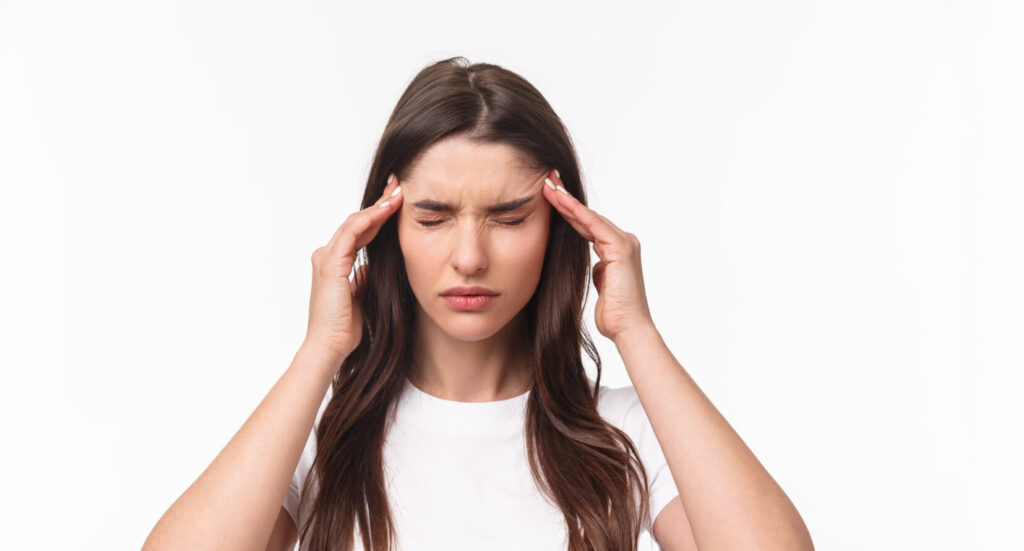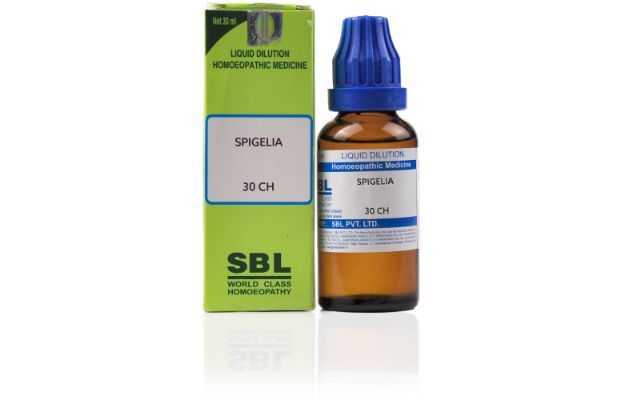Homeopathic Medicine For Migraine

A migraine is a complex and often debilitating neurological disorder characterized by recurrent, severe headaches that typically affect one side of the head, though they can occur on both sides. Migraines are often accompanied by a range of other symptoms, and they can significantly impact a person’s daily life.
Headache Pain: The hallmark of a migraine is a severe, throbbing or pulsating headache. This pain can range from moderate to severe and can last for several hours to a few days. Migraine pain is often unilateral (affecting one side of the head) but can sometimes be bilateral (affecting both sides).
Auras: Some people with migraines experience auras before the headache phase. Auras are usually visual disturbances, but they can also involve other sensory or motor symptoms. Visual auras may include seeing flashing lights, zigzag lines, blind spots, or shimmering lights. Auras typically last for about 20 minutes to an hour before the headache begins.
Other Symptoms: Migraines are not limited to just a headache. They are often associated with a wide range of other symptoms, which can include nausea, vomiting, sensitivity to light (photophobia), and sensitivity to sound (phonophobia).
Triggers: Migraines can be triggered by various factors that vary from person to person. Common triggers include stress, certain foods and beverages (e.g., chocolate, red wine, aged cheeses), changes in sleep patterns, hormonal fluctuations, strong odors, bright lights, and weather changes.
Phases: Migraines are typically divided into several phases, which may not always be experienced in the same order. These phases include the prodrome (pre-headache phase), aura (if present), headache phase, and postdrome (recovery phase).
Hormonal Influences: Migraines are more common in women, and many women experience a connection between their menstrual cycle and the occurrence of migraines. Some women have menstrual migraines that occur in relation to their periods.
Neurological Basis: Migraines are considered a neurological disorder. They are thought to involve complex interactions in the brain and changes in brain chemistry, as well as the dilation and constriction of blood vessels in the head.
Genetic Predisposition: There is a genetic component to migraines, with a family history of migraines often being a risk factor. If one or both parents have migraines, it increases the likelihood of a person experiencing them.
Homeopathic Medicine
1. Natrum Muriaticum
Headache Location: Migraine headaches that respond well to Natrum muriaticum typically occur on one side of the head. The pain is often focused on the right side.
Pain Description: The headache pain is often described as a “hammering” or throbbing sensation. It can be severe and intense, with a feeling of pressure in the head.
Headache Trigger: Emotional factors, especially grief and stress, are common triggers for migraines in individuals who may benefit from Natrum muriaticum. Migraines can be associated with suppressed emotions or deep-seated emotional issues.
Sensitivity to Light: There is often an increased sensitivity to light (photophobia) during the headache.
Menstrual Connection: Natrum muriaticum is sometimes indicated for migraines that are related to the menstrual cycle. Women may experience migraines around the time of their period.
Craving for Salt: People who require Natrum muriaticum may have a strong craving for salty foods, and this craving may be more pronounced during a migraine episode.
Emotional Characteristics: Individuals who may benefit from this remedy often exhibit a reserved, introverted, and emotionally sensitive nature. They tend to internalize their emotions and may have difficulty expressing their feelings.

2. Belladonna
Sudden Onset: Belladonna is often indicated when migraines come on suddenly and intensely, without warning.
Throbbing Pain: The headache associated with Belladonna may have a throbbing or pounding quality, and it can be quite severe.
One-Sided Pain: Migraines treated with Belladonna may involve severe, one-sided head pain. It’s a common feature of Belladonna-related headaches.
Sensitivity to Light: Individuals needing Belladonna may experience extreme sensitivity to light (photophobia). Even a small amount of light can exacerbate their pain.
Sensitivity to Noise: Along with photophobia, they may also have heightened sensitivity to noise (phonophobia).
Flushed Face: Those who benefit from Belladonna often have a flushed, red face, which is a notable symptom.
Delirium or Confusion: In some cases, individuals might experience a state of delirium or confusion during a migraine attack, which can be characteristic of Belladonna-related headaches.

3. Gelsemium Sempervirens
Migraines Triggered by Anticipation or Anxiety: Gelsemium is often associated with migraines that develop in situations where there is a sense of anticipation or anxiety. This may include anticipation of a stressful event, like an important meeting or performance.
Heavy Head Sensation: Gelsemium often describe a feeling of a heavy head. It can feel as though the head is congested, full, or drooping.
Blurred Vision: Vision disturbances are common with Gelsemium-related migraines. This can involve blurred vision, a feeling of heaviness over the eyes, or difficulty focusing the eyes.
Desire for Solitude: Individuals who need Gelsemium may prefer to be left alone during a migraine. They often feel better in a quiet, dark room.
Overall Weakness: Along with the head symptoms, Gelsemium may be indicated when there is a sense of overall muscular and mental weakness. This can manifest as trembling, fatigue, or a lack of motivation.

4. Iris Versicolor
Migraine Pain: The pain is often described as throbbing, sharp, or burning in character. It may involve one side of the head (unilateral) and can be located around the eyes, typically the right eye.
Nausea and Vomiting: Nausea is a prominent feature, and it can be severe, often leading to vomiting.
Visual Disturbances: Some people may experience visual disturbances before or during the migraine. These disturbances can include seeing bright, colorful lights or zigzag lines.
Salivation: Excessive salivation or a sensation of a bitter taste in the mouth may be present.
Worsening with Menstruation: The migraines may have a connection to the menstrual cycle and could be more severe or frequent around the time of menstruation.
Burning Sensation: There may be a sensation of heat or burning, especially in the eyes or forehead.
Irritability: A person needing Iris versicolor may become irritable and may prefer solitude during a migraine attack.

5. Sanguinaria Canadensis
Right-Sided Migraines: Sanguinaria is often recommended for migraines that are predominantly located on the right side of the head. The pain can start on the right side and may then extend to the left or may involve the entire head.
Throbbing or Stabbing Pain: Migraines calling for Sanguinaria may feature a throbbing or stabbing type of headache pain. This pain is often severe and may be accompanied by a bursting sensation.
Nausea and Vomiting: Individuals who need Sanguinaria may experience nausea and, in some cases, vomiting during their migraines.
Visual Disturbances: Some people with Sanguinaria-indicated migraines may experience visual disturbances or auras, which can include blurred vision or flashing lights.
Aggravation from Motion: Motion, or any jarring or movement, can worsen the headache in people who may benefit from Sanguinaria.
Right Eye Affection: There may be a sense of fullness or pressure in the right eye. Pain can extend from the head to the eye or be centered around the right eye.
Relief from Sleep: In some cases, sleep may bring relief, and the individual may find that the migraine headache is better after taking a nap.

6. Spigelia
Severe Throbbing Pain: The key characteristic of a Spigelia migraine is intense, throbbing or pulsating pain. This pain is usually focused on the left side of the head, especially the left eye or left temple.
Aggravation on the Left Side: The pain is often described as being worse on the left side and may extend from the eye or temple to the back of the head. Light touch or movement can worsen the pain.
Nausea and Vomiting: Nausea and a tendency to vomit may accompany the migraine.
Headache Triggers: Spigelia migraines may be triggered or worsened by sudden movements, noise, or exposure to bright light.
Eye Symptoms: Some individuals may experience specific eye symptoms, such as a sensation of the eye being pulled or dragged.
Cold Applications: Applying cold compresses or cold air may provide relief for those with Spigelia migraines

7. Kali Carbonicum
Right-Sided Headache: Kali carb is often associated with headaches that predominantly affect the right side of the head. The pain is typically throbbing or stitching in nature.
Migraines with Aura: If the individual experiences auras before their migraine, Kali carb may be considered as a remedy. These auras can include visual disturbances, such as zigzag lines or flickering lights.
Periodic Migraines: Kali carb may be recommended if the migraines have a periodic pattern and tend to occur at specific times, such as during menstruation or at the same time each day.
Restlessness: Individuals who require Kali carb may experience restlessness and agitation during their migraine attacks. They may find it challenging to lie still or may pace around.
Sensitivity to Light and Noise: Like many migraine sufferers, those who could benefit from Kali carb may experience heightened sensitivity to light and noise during an attack.
Nausea and Vomiting: Nausea and vomiting can be associated with Kali carb-type migraines.
Pressure Sensation: Some individuals might describe a feeling of pressure or tightness in the head during a migraine, which can be characteristic of Kali carb.

8. Cocculus Indica
Vertigo and Dizziness: Cocculus indicus is often used for people who experience vertigo with nausea and vomiting, especially when the vertigo is triggered by motion or changes in position. They may feel better when lying down.
Nausea: This remedy is known for helping with nausea and vomiting, especially in cases where the person feels nauseated due to motion sickness or emotional stress.
Headaches: Cocculus indicus may be considered for headaches, including migraines, where the pain is accompanied by dizziness, nausea, and vomiting. The headache pain can be throbbing or shooting.

Medicine images use for reference only selection of homeopathic medicine depends on the individual’s specific symptoms and overall constitution. Moreover, homeopathy is a holistic system of medicine that treats the individual as a whole. In addition to addressing the physical symptoms, it takes into account the emotional and mental state of the person. Consequently, it’s crucial to consult with a qualified homeopathic practitioner for personalized treatment.
The information provided on this website is intended solely for educational purposes. Always seek the advice of your physician or other qualified health provider.

Pingback: Homeopathc Medicine For Keloids - HOMOEO HEALING